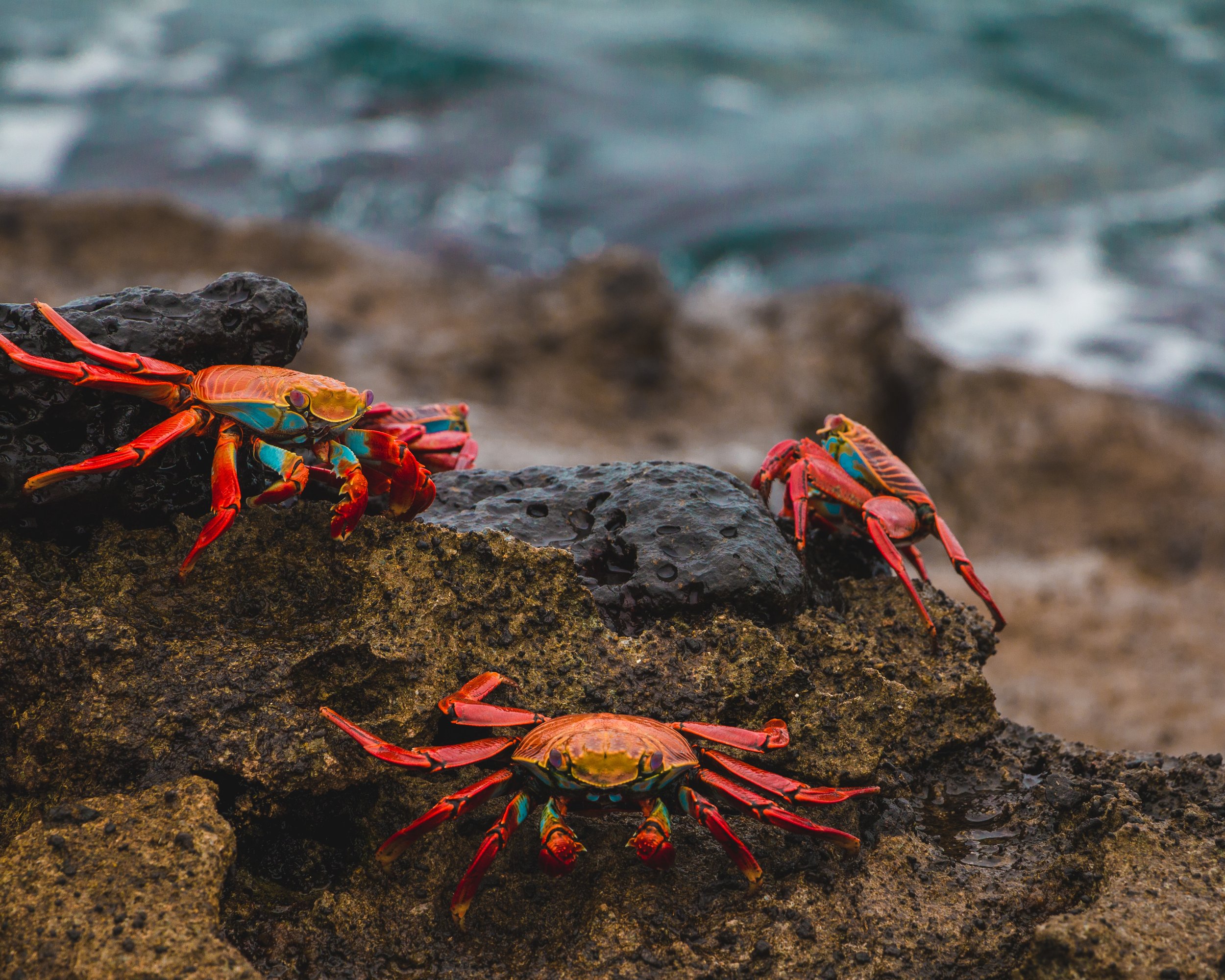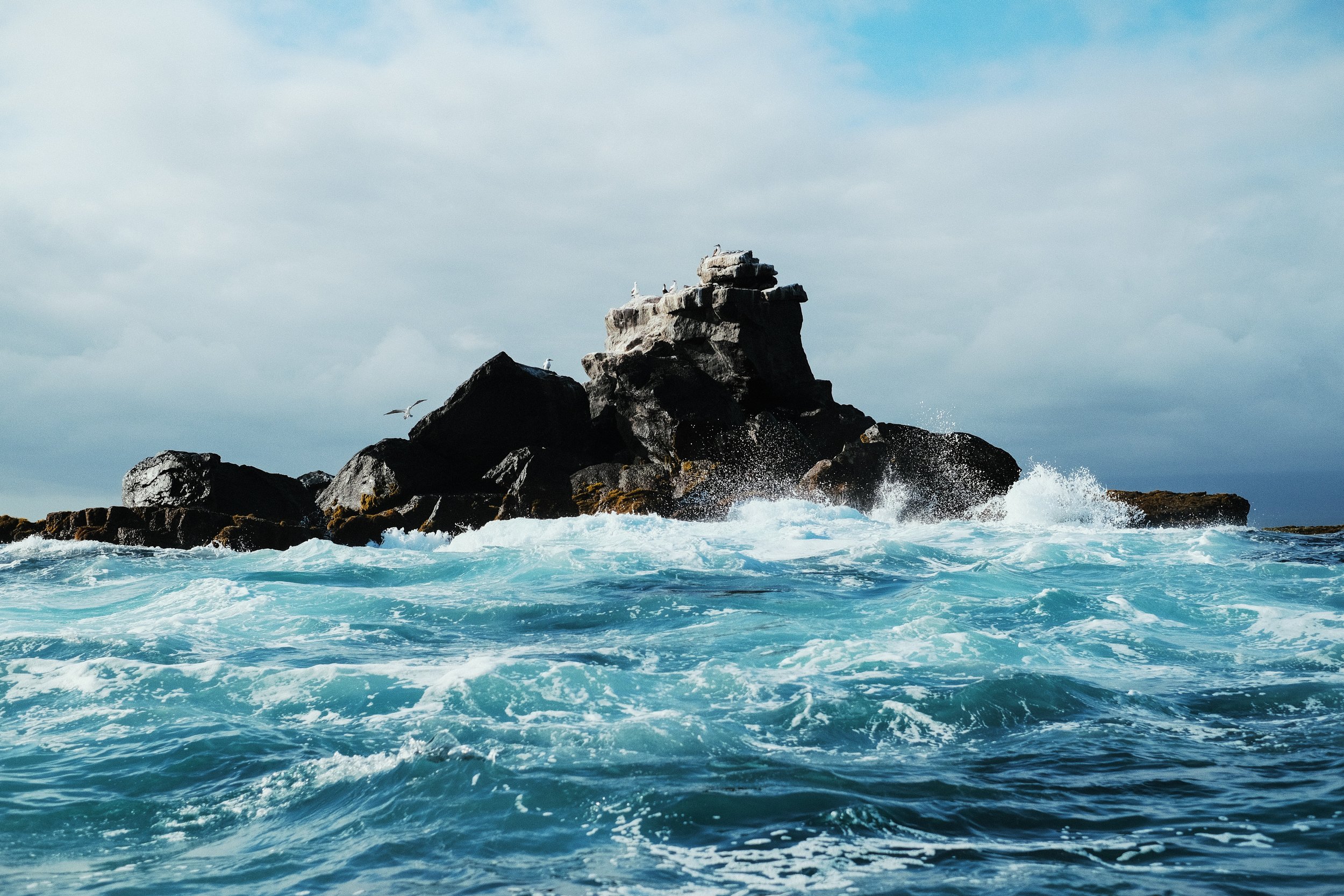Jeremy Giles
How visiting the Galapagos contributes to their destruction.
Me, at 16, during my first trip to the Galapagos Islands. Jeremy Giles
I’ve visited the Galapagos Islands three times in my life. The first was when I was 16, on a youth trip. I spent two weeks on the islands and was in awe of the majesty of the giant Galapagos tortoises, enchanted by the playfulness of the Galapagos sea lions and obsessed with the marine iguanas.
The second trip occurred when I was studying abroad in the Galapagos’ home country, Ecuador. My program visited the islands for a week about two months into the experience; like the first time, it was magical.
When my parents realized I was visiting the islands again, they told me it wasn’t fair that I get to visit twice when they hadn’t even visited once. So, after my program ended, we all went. My experience with the archipelago came full circle as I was finally able to show my parents what I first saw all those years ago.
Three Sally Lightfoot Crabs. Amy Perez. CC0
I don’t regret visiting the Galapagos; the islands changed my life, and will always be special to me. However, as time goes on I have realized the ethics of visiting the island have been, and are increasingly becoming, dubious.
Each year, it is recommended that no more than 12,000 people visit the islands. Last year alone, almost 270,000 people made the trip, over 20 times the recommended limit. Such extravagance causes extreme environmental risk. Every time someone leaves a cruise ship or flies to the Galapagos, or a storage vessel unloads food for tourists represents a chance for a new invasive species to establish itself. Currently, there are almost 1,500 invasive species on the island, a number that is only likely to increase with time.
Waves crashing on rocks. CC0
Furthermore, between 2006 and 2017 more than 200 hotels were built on the Galapagos Islands to support the influx of tourists. Many of these hotels were built by foreign companies interested only in profit. 80% of the islands’ economy revolves around tourism. However, due to the aforementioned rise in international business, much of this money does not remain on the archipelago to benefit its native inhabitants, causing many residents to report inadequate health care, basic services and educational infrastructure.
While the damage can be mitigated by decreasing the number of tourists visiting the island, no easy solution is forthcoming. The Galapagos are currently stuck in a vicious cycle. On the islands today, there are 2,000 endemic species that cannot be found anywhere else in the world. To protect these species, the Galapagos Islands need money. It earns this money from tourists. However, when tourists visit the islands, they further damage the ecosystem, meaning the islands need more money to protect them, starting the cycle over again.
A restaurant on the Galapagos Islands. Jeremy Giles
Unfortunately, the situation in the Galapagos has recently become more dire. 260 industrial fishing vessels, the majority of which are from China, are currently camped just beyond the boundary of Ecuador’s legal waters around the Galapagos. These vessels are targeting sensitive areas near Galapagos and threatening much of the marine diversity that lives there. However, while it is incredibly harmful, this industrial fishing is technically in international waters and is thus legal, limiting how Ecuador and the international community can respond. While this is not the result of tourism, it does exacerbate the environmental issues facing the Galapagos.
There are ongoing efforts to conserve the environment and species of the Galapagos. Organizations like the Galapagos Conservation Trust and the locally-led Frente Insular are fighting plastic pollution and industrial fishing on the Islands. The Charles Darwin Research Station actively breeds and protects the different species of the Galapagos Tortoise. And, of the about 200 million dollars the Galapagos earns each year, 86 million is used just for invasive species removal.
However, much of this conversation support is funded either directly through tourist programs or indirectly from admission fees or international volunteers. This is not at all to say that these organizations are not doing great work and should not be supported. They should, and if you want to help protect the Galapagos, donating to these organizations is a great place to start. Without independent funding, these organizations, just like the rest of the Islands, will be trapped in the Galapagos Islands’ self-destructive cycle.
The last time I was in the Galapagos, I accidentally dropped a pair of oversized snorkeling goggles into deep water as I was cleaning them. I watched as the hunk of cheap plastic sank so deep that, even in the clear Galapagos water, it could not be seen. Others in my group dove down to try and save them, but they were too late.
No one visitor or organization is at fault for environmental degradation in the Galapagos, but, by traveling to the Islands, I participated in a system that is slowly destroying them. At a minimum, I made the waters around the Galapagos one oversized-goggles worth of plastic more contaminated.
GET INVOLVED:
Frente Insular: Frente Insular is a local-led Galapagos conservation organization founded in 2017. They were originally formed to protest against a Chinese ship near the Galapagos that carried 300 tons of recently-fished protected marine species. Today, the group advocates for the expansion of the Galapagos Marine Reserve, coastal cleanup and the native Galapagos community. You can find them here.
Galapagos Conservation Trust: The Galapagos Conservation Trust is a UK-based charity founded in 1995 to help protect the archipelago. It fights to stop indigenous species extinction and control invasive species in the Galapagos. In addition, it aims to build up the Islands’ climate resilience while minimizing their human footprint. You can donate to the Galapagos Conservation Trust here.
Charles Darwin Research Station: The Charles Darwin Research Station is an International Non-Profit formed in 1959 to research and conserve the biodiversity of the Galapagos Islands. They are currently managing over 24 projects in the Galapagos. To support the Charles Darwin Research Station, you can donate here.
Jeremy Giles
Jeremy is a Writing Seminars and International Studies major at Johns Hopkins University. He is an avid writer and the Co-Founder of Writers’ Warehouse, Johns Hopkins’ first creative writing group. He is an advocate for Indigenous rights, and studies how Indigenous philosophies can be used to help prevent climate change. Using his writing, he hopes to bring attention to underrepresented voices in today’s world.






